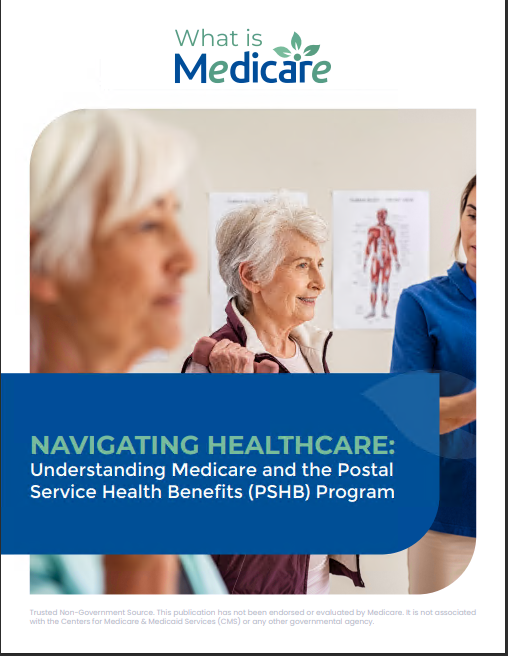Key Takeaways:
- Medicare Advantage and Medigap plans offer different benefits, costs, and provider flexibility, catering to varied healthcare needs.
- Choosing the right plan depends on your healthcare usage, preferences for provider access, and financial considerations.
Confused Between Medicare Advantage and Medigap? Here’s How They Differ
Choosing between Medicare Advantage and Medigap can be challenging. Both plans have unique benefits and cater to different healthcare needs. Let’s break down their differences to help you make an informed decision.
Medicare Advantage vs. Medigap: What’s the Big Difference?
Medicare Advantage (Part C) plans are offered by private insurance companies approved by Medicare. They provide all Part A and Part B benefits and often include additional coverage such as vision, dental, and prescription drugs. Medigap (Medicare Supplement Insurance) plans, on the other hand, are designed to fill the “gaps” in Original Medicare by covering costs like copayments, coinsurance, and deductibles. Medigap does not cover additional services like dental or vision.
Medicare Advantage plans often work like traditional health insurance plans, with networks of doctors and hospitals. They may require referrals to see specialists and may have network restrictions. In contrast, Medigap plans offer more flexibility, allowing you to see any doctor who accepts Medicare, without needing referrals.
Choosing Doctors: How Each Plan Affects Your Options
One of the main differences between Medicare Advantage and Medigap is the flexibility in choosing healthcare providers. With Medigap, you can see any doctor or specialist who accepts Medicare, providing greater freedom and nationwide coverage. Medicare Advantage plans typically require you to use a network of doctors and hospitals, and you may need referrals to see specialists, especially in HMO plans.
This means that if you have a preferred doctor or specialist, or if you travel frequently and want the assurance that you can see any Medicare-accepting provider across the country, Medigap might be the better option. Medicare Advantage plans can be more restrictive, which might not suit everyone’s needs, especially if you need specialized care that requires frequent visits to different providers.
Prescription Coverage: What to Expect from Each Plan
Medicare Advantage plans often include prescription drug coverage (Part D) as part of the plan. This means you don’t need to purchase a separate plan for medications. Medigap plans, however, do not include prescription drug coverage, so you will need to enroll in a standalone Part D plan to cover your medications.
Having prescription drug coverage included in Medicare Advantage plans can be convenient, simplifying your healthcare coverage under one plan. However, it’s important to review the drug formulary of each plan, as the specific medications covered can vary. For those with Medigap, the need to purchase a separate Part D plan adds another layer of decision-making, but it allows for more tailored drug coverage choices.
Traveling with Your Coverage: Nationwide and Beyond
If you travel frequently or live in different parts of the country during the year, Medigap might be more suitable for you. Medigap plans provide coverage across the U.S., allowing you to visit any doctor or hospital that accepts Medicare. In contrast, Medicare Advantage plans may have geographic limitations, with coverage primarily within the plan’s network.
This nationwide coverage makes Medigap an attractive option for snowbirds or those who travel extensively. Medicare Advantage plans may restrict coverage to a specific service area, and while some plans may offer emergency coverage outside the area, routine care will generally need to be sought within the network.
Extra Perks: Dental, Vision, and Hearing Services
Medicare Advantage plans often include additional benefits not covered by Original Medicare, such as dental, vision, and hearing services. These extra perks can be a significant advantage if you need these types of care. Medigap plans do not offer these additional benefits, focusing instead on covering out-of-pocket costs associated with Medicare-covered services.
For individuals who require regular dental or vision care, the additional benefits offered by Medicare Advantage plans can be very appealing. These plans may also offer wellness programs, gym memberships, and other health-related perks that are not available with Medigap.
Cost Comparison: Premiums, Copays, and Out-of-Pocket Limits
Medicare Advantage plans generally have lower monthly premiums than Medigap plans, but they often come with higher out-of-pocket costs, such as copays and coinsurance. Medicare Advantage plans also have an annual out-of-pocket maximum, which caps your expenses for covered services. Medigap plans usually have higher premiums but lower out-of-pocket costs, providing more predictable healthcare expenses.
When considering costs, it’s important to look beyond the premiums. While Medicare Advantage plans might seem less expensive monthly, the copays and out-of-pocket expenses can add up, particularly if you require frequent medical services. Medigap’s higher premiums provide the benefit of predictable costs, as most of your medical expenses are covered after the premium.
Flexibility: Switching Plans and Enrollment Periods
Switching between plans can be complex. Medicare Advantage plans have specific enrollment periods, including the Initial Enrollment Period (IEP), the Annual Enrollment Period (AEP), and Special Enrollment Periods (SEP) for qualifying life events. Medigap plans can be purchased any time once you are enrolled in Medicare Part B, but the best time is during your Medigap Open Enrollment Period, which is the six-month period that starts the month you turn 65 and are enrolled in Part B. During this period, you have guaranteed issue rights, meaning you can buy any Medigap policy without medical underwriting.
After this period, purchasing a Medigap policy might require medical underwriting, which means your application could be denied based on health conditions. In contrast, Medicare Advantage plans do not use medical underwriting, making it easier to switch during designated enrollment periods. However, switching from Medicare Advantage to Medigap later can be difficult if your health status changes.
Which One’s Right for You? Tips for Making Your Choice
Choosing between Medicare Advantage and Medigap depends on your healthcare needs and financial situation. If you prefer lower premiums, additional benefits like dental and vision, and don’t mind network restrictions, Medicare Advantage might be the better option. However, if you value the freedom to choose any doctor, travel frequently, and want more predictable healthcare costs, Medigap could be the right choice for you.
To make an informed decision, consider your healthcare needs, travel habits, and financial situation. Evaluate the total costs, including premiums, copays, and out-of-pocket expenses, and consider the importance of additional benefits versus provider flexibility.
Making an Informed Decision
Understanding the key differences between Medicare Advantage and Medigap is crucial in making the best choice for your healthcare needs. Evaluate your healthcare usage, provider preferences, and financial situation to determine which plan offers the most benefits for you.
Remember that your choice can significantly impact your access to healthcare providers, the predictability of your medical expenses, and the additional benefits you receive. Take the time to compare plans, read the fine print, and consult with a licensed insurance agent if needed to ensure you choose the plan that best meets your needs.
Final Thoughts on Medicare Advantage vs. Medigap
Choosing between Medicare Advantage and Medigap is a significant decision that can affect your healthcare coverage and costs. By understanding the differences in coverage, provider access, costs, and additional benefits, you can make an informed choice that aligns with your healthcare needs and financial situation.
Both types of plans have their advantages and potential drawbacks, so it’s essential to carefully consider your priorities and healthcare requirements. Whether you opt for the comprehensive coverage and flexibility of Medigap or the convenience and additional perks of Medicare Advantage, ensuring you have the right plan in place will provide peace of mind and help you manage your healthcare effectively.
Contact Information:
Email: [email protected]
Phone: 4075554567






